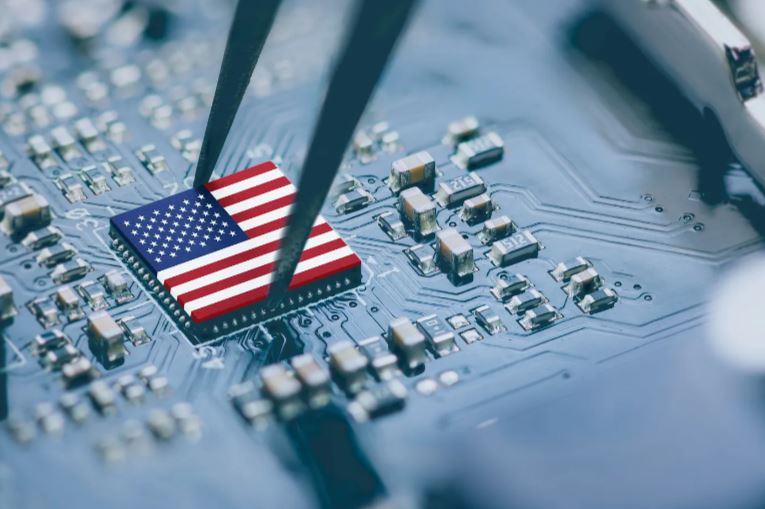The tech revolution has drastically changed the way we live, work, and interact with the world around us. From smartphones to artificial intelligence (AI), technological advancements have reshaped nearly every aspect of society, improving productivity, convenience, and access to information. As we stand on the threshold of new innovations like quantum computing and 5G, the impact of technology is set to grow even further, creating opportunities—and challenges—that will define the future.

The Rise of the Tech Revolution
The modern tech revolution began in the mid-20th century, driven by developments in computing and electronics. Innovations like the transistor, the microchip, and the invention of the internet laid the foundation for a digital transformation that would sweep across industries.
The personal computer, introduced in the 1980s, revolutionized the workplace and the home, making computing power accessible to the masses. Companies like IBM, Apple, and Microsoft played pivotal roles in driving the early phases of this revolution. However, it was the rise of the internet in the 1990s that truly globalized the tech revolution. Suddenly, the world was connected in ways previously unimaginable, and the digital age began in earnest.
As the 21st century unfolded, mobile technology emerged as the next transformative force. The introduction of smartphones in the late 2000s, spearheaded by Apple’s iPhone, gave billions of people access to the internet in their pockets, forever altering communication, commerce, and entertainment. Since then, the pace of technological change has only accelerated.

Key Pillars of the Tech Revolution
1. Artificial Intelligence (AI) and Machine Learning
Artificial intelligence is at the heart of the current phase of the tech revolution. AI’s ability to analyze massive datasets, identify patterns, and make decisions has already changed how we live and work. From autonomous vehicles to personalized recommendations on streaming platforms, AI has infiltrated nearly every aspect of our lives.
Machine learning, a subset of AI, allows computers to learn and improve from experience without being explicitly programmed. This capability is revolutionizing industries like healthcare, finance, and manufacturing. For example, AI-driven diagnostic tools can now analyze medical images with remarkable accuracy, often outperforming human doctors in detecting diseases early. In finance, algorithms trade stocks and manage portfolios at speeds far beyond human capacity.
AI is also creating new ethical dilemmas. As automation becomes more widespread, concerns about job displacement, privacy, and the potential misuse of AI for malicious purposes are growing. Tech companies and governments are now grappling with how to regulate AI to ensure it benefits society while minimizing risks.

2. 5G and the Internet of Things (IoT)
The rollout of 5G technology represents another cornerstone of the tech revolution. With speeds up to 100 times faster than 4G, 5G networks will enable a new era of connectivity. This enhanced connectivity is particularly important for the Internet of Things (IoT), a network of connected devices that communicate with each other to create smart environments.
Smart homes, for instance, use IoT devices like thermostats, lighting systems, and security cameras that can be controlled remotely via smartphones. In healthcare, wearable devices monitor vital signs and transmit data to doctors in real-time, enabling remote diagnosis and treatment. In cities, IoT sensors help manage traffic flow, reduce energy consumption, and improve public safety by providing real-time data to local governments.
The combination of 5G and IoT will also drive advancements in autonomous vehicles, enabling cars to communicate with each other and their surroundings more effectively. This could significantly reduce accidents and traffic congestion, revolutionizing the way we think about transportation.
3. Blockchain and Cryptocurrencies
While initially associated with Bitcoin, blockchain technology has far-reaching implications beyond cryptocurrency. Blockchain is a decentralized, secure ledger that records transactions across multiple computers. This technology is already disrupting industries by offering transparency, security, and decentralization.
In the financial sector, blockchain has the potential to revolutionize how transactions are processed, reducing the need for intermediaries like banks. Cryptocurrencies, enabled by blockchain, are also gaining wider acceptance, with some countries considering the adoption of digital currencies as official legal tender.
Beyond finance, blockchain is being used to track supply chains, prevent fraud, and even secure voting systems. Its ability to create tamper-proof records has implications for everything from healthcare records to intellectual property rights.
4. Cloud Computing
Cloud computing has redefined how businesses store and process data. Instead of relying on local servers, companies can now use cloud platforms like Amazon Web Services (AWS), Google Cloud, and Microsoft Azure to store data, run applications, and scale their operations globally with minimal infrastructure.
The rise of the cloud has made it easier for companies to adopt cutting-edge technologies like AI and big data analytics. It has also democratized access to powerful computing resources, allowing startups and small businesses to compete with larger corporations without significant capital investments.
Additionally, cloud computing has enabled the remote work revolution. During the COVID-19 pandemic, companies worldwide shifted to remote work, relying on cloud-based collaboration tools like Zoom, Slack, and Microsoft Teams. This shift has fundamentally changed workplace dynamics, with many companies now adopting hybrid work models as the new norm.
The Societal Impact of the Tech Revolution
The tech revolution has brought immense benefits to society. It has improved healthcare outcomes, increased global connectivity, and created new industries and job opportunities. Automation has streamlined production processes, reducing costs and making products more accessible to consumers. E-commerce has exploded, allowing people to shop from anywhere in the world, revolutionizing retail.
However, the tech revolution has also raised concerns about inequality. The rapid pace of technological change has led to a growing digital divide between those who have access to technology and those who do not. In many parts of the world, access to reliable internet and modern devices remains limited, preventing people from fully participating in the digital economy.
Another significant challenge is the impact of technology on the job market. While tech creates new industries, it also disrupts traditional sectors. Automation is replacing jobs in manufacturing, retail, and even some white-collar professions. Workers in these industries may face difficulties transitioning to new roles without adequate retraining programs.
The ethical implications of AI are also a growing concern. From biased algorithms that perpetuate discrimination to the potential misuse of facial recognition technology by authoritarian regimes, the tech revolution raises serious questions about privacy, accountability, and human rights.
The Future of the Tech Revolution
Looking forward, the tech revolution shows no signs of slowing down. Quantum computing promises to unlock previously unimaginable levels of processing power, enabling breakthroughs in fields like medicine, materials science, and cryptography. Augmented reality (AR) and virtual reality (VR) are set to transform industries like entertainment, education, and real estate, creating immersive experiences that blur the line between the digital and physical worlds.
However, as we embrace the future, it’s essential to ensure that the benefits of the tech revolution are shared equitably. Policymakers, educators, and industry leaders must work together to address the challenges posed by rapid technological change, from workforce retraining to data privacy protections.
Conclusion
The tech revolution is one of the most transformative forces of our time. While it has the potential to unlock incredible opportunities, it also presents challenges that must be navigated thoughtfully. As we move into the future, the decisions we make about how we develop and use technology will shape the world for generations to come. The key to success lies in striking a balance between innovation and responsibility, ensuring that technology continues to serve humanity’s best interests.
